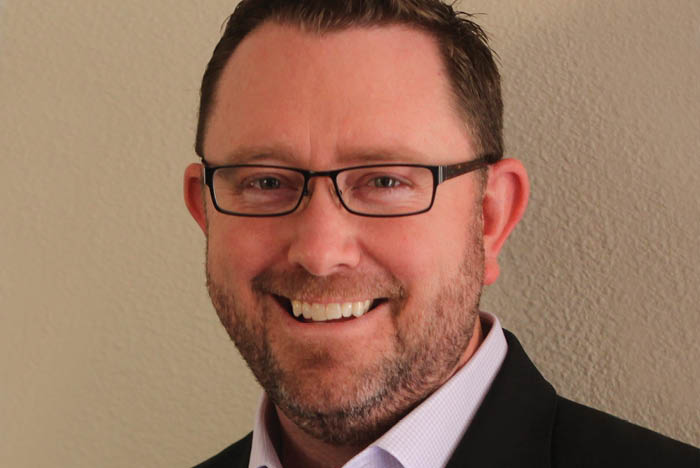Working on the local and national levels

The Goings File
CV
- President of DAC Inc., Houston (present).
- Manager of U.S. health care solutions at Schneider Electric, Houston.
Accomplishments
- 2021 ASHE President’s Award winner.
- 2013 Texas Association of Healthcare Facilities Management’s Distinguished Executive Award winner.
- Senior designation with ASHE (SASHE)
- Certified Health Care Physical Environment Worker.
- Certified Energy Manager.
- Certified Healthcare Safety Professional
- ASHE Advisory Board member and associate member director (2016-2020).
- Texas Association of Healthcare Facilities Management board member and associate director (2007-present).
- Houston Area Association for Hospital Engineering past president.
- University of Houston Bauer College of Business Customer Experience advisory board (2021-present).
Education
- Bachelor’s of business administration, management, Sam Houston State University, Huntsville, Texas.
Sean Goings, CEM, CHSP, SASHE, president of DAC Inc. in Houston, received the 2021 American Society for Health Care Engineering (ASHE) President’s Award for his dedication at the national and local levels. This month, he talks with HFM about what inspires him in health care facilities management and strategies to train new leaders.
How does it feel to receive the 2021 ASHE President’s Award?
It’s a gigantic honor to be considered for such a prestigious award. ASHE has given me so much more than I’ll ever be able to give back, and I’ll forever be indebted to the Advisory Board, the staff and its members. It’s provided me some of the greatest moments in my life and professional career as I’ve made deep friendships that will span a lifetime. I’ve grown to love the field of health care and the people who work within it. I’m truly humbled to receive this acknowledgment.
Tell us how you started your career and how it has led to where you are today.
Like many of my colleagues in health care, I unknowingly started my career. It was through a summer job working for Landis & Gyr on the Texas A&M campus while in college. Cleaning up on construction sites eventually led to installing building automation systems, running conduit and pulling wire. That company was acquired by Siemens and I continued working for them all over Texas to pay for college.
After earning my degree, I continued my career with Siemens in Houston, working on construction and technical renovation projects with some of the country’s largest medical institutions. I wanted to make a bigger difference, so I convinced management to hold an internal competition for a customer-facing sales role. Winning that role propelled me into other roles where I became heavily involved in ASHE and its Texas chapter.
With a focus on health care and leveraging my experiences with ASHE, I was recruited to take on a business development role with Schneider Electric. Soon afterward, I assumed responsibility for developing the U.S. health care segment across all business units. I visited hundreds of facilities around the country in that role and learned about the common challenges health care facility professionals faced, and got a dose of what drives them to execute their jobs with passion.
In late 2014, I was provided the opportunity to take 20 years of diverse experience and apply it to leading a small business with the simple goal of growing it into something great. We’ve spent the past seven years nearly quadrupling our business, tripling our headcount and growing to serve nearly every major health system in Texas. I’m proud of what the people of DAC have been able to accomplish and excited about the experiences in front of me.
What role has ASHE played in your career development?
Spending personal time with passionate individuals is contagious, no matter what you’re doing. I’ve found passion and purpose at every step of my involvement of progressing in the health care facility management profession and working to advance the organizations that support it.
I’ve never really looked at my service to organizations like ASHE, the Texas Association of Healthcare Facilities Management or the local groups as a volunteer role, nor did I look at them as an extension to my job. I’ve always approached them like an employee of the organization willing to do what it took to make it successful.
I’ve been blessed with some of the greatest mentors imaginable, whether they knew they were serving that role or not. Health care is a tough field. Managing facilities as core components of the mission is exhausting with the relentless regulatory environment and continuous financial pressures. When you really spend time with the people who make it all work, you realize it is purpose that drives them, and it’s awesome when you see it in action. The most powerful weapon on earth is the human soul on fire.
Over the years, I’ve tried to soak up every bit of positive influence I could from the great people I’ve served with. I truly believe I wouldn’t be where I am today without it, and I give a lot of credit to ASHE and the people I’ve met along the way for opening my eyes to a purpose-driven career.
How have you seen ASHE evolve in its service to associate members?
ASHE has made great strides in recognizing the value of the associate members and taking advantage of the expertise, knowledge and effort they are willing to contribute to the profession and mission. The picture of ASHE today and tomorrow is vastly different than it was just a decade ago. It’s clear our associate membership is a key component of ASHE’s future success. However, we still have a long way to go. Mutual value in membership is different for every associate member, and every company and organization. Each requires a return on investment, and it’s up to all of us to find what that means.
Where do you feel local chapters fit into the overall ASHE strategy?
Chapters are the lifeblood of ASHE and its success. It’s where ASHE’s strategies come to life, where standards are employed and enforced, where education finds value and where community exists.
There is no area of the health care community more critical for associate member involvement and volunteerism than the chapters. And it’s the highest area of mutual return on investment. I’ve proudly served the board of the Texas chapter for 15 years and have worked with other chapters all over the U.S. in various stages of development, support and consultation. Any success and involvement I’ve had with ASHE has been born at the chapter level, and it’s been a major contributor to my career.
Are there other opportunities in the field that ASHE and its members are well-suited to address?
I’ve always had a passion for succession planning and where we can find the next leaders to take our places. Health care facilities management is not alone in that challenge, but the challenge is particularly difficult in this profession.
Being a health care facility manager is not a sexy job. To solve the issue, we default to our impressions of the next generation. How do we entice them? How do we restructure or better market these roles to appeal to their wants and desires? How do we develop a social media plan so they can see us? ASHE, and its chapters and volunteers, have worked tirelessly to develop solutions to create pathways for young professionals.
However, as a community, we have to do a better job matriculating the staff that currently exists in the rank and file, developing the trades and providing all of them a better path to leadership. That’s how most leadership got to where they are now. With an infinite number of potential solutions, this is an unconventional area where business partners and associate members can help.
Associate members also can help by embracing the Certified Health Care Physical Environment Worker credentials for their team members. I created an initiative within my company to have all of our customer-facing employees certified regardless of their day-to-day interactions in health care facilities. It has helped them understand the requirements of working in a health care environment, their impact on the physical environment, and the purpose we serve to facilities and their occupants. Over 120 employees have achieved the certification, and the mutual benefit is clear.




